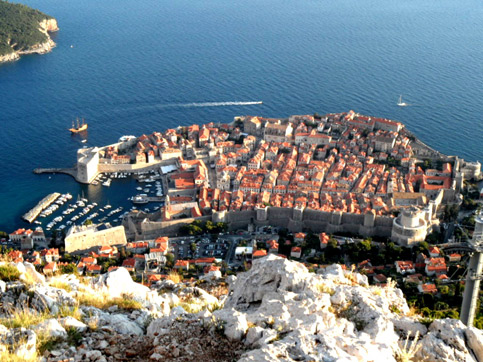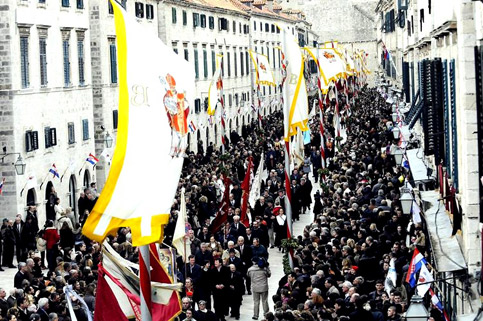Geographical Location and Population
The city of Dubrovnik dubbed as the “Pearl of the Adriatic”, open to visitors from all corners of the world throughout its history. It is situated in the very south of the Republic of Croatia on the Adriatic Sea in the Mediterranean and surrounded by a group of islands known as the Elaphite archipelago. A population of 55,638 is distributed over the area to 35 locations. The whole wider region of Dubrovnik is well-known for its fascinating landscapes, islands, abundant Mediterranean vegetation, mild climate and interesting smaller settlements with rich heritage. Inhabited since prehistoric times, this region formed integral part of the Dubrovnik Republic territory since the medieval. Dubrovnik is also known as the city of artists, writers and scientists, legacy of which is carried today in museums, libraries, monasteries, institutes, universities, galleries as well as music and theatre performances.
History
It was founded in the first half of the 7th century when Dubrovnik became an important Mediterranean Sea power from the 13th century onwards. Unfortunately, it was severely damaged by an earthquake in 1667, Dubrovnik still managed to preserve its beautiful Gothic, Renaissance and Baroque churches, monasteries, palaces and fountains.
Dubrovnik Republic was a self-governing until the beginning of 19th century and played a leading part in maritime and merchant trade with excellent policies that kept Dubrovnik as a remarkably well-preserved example of a late-medieval walled city in white stone with a regular street layout and contrasting red roof tiles.
Dubrovnik managed to preserve itself from foreign attacks and destruction throughout its long history, but still had suffered substantially from the most recent Croatian War of Independence (Homeland War) in 1991 to 1995. It had been besieged and its surrounding territories were occupied by the Serb controlled forces, suffered destruction consequences of which are still intact. The villages and small towns were subsequently in most part were restored and rebuilt. However, much of their frail intangible cultural heritage has suffered which requires extraordinary safeguarding efforts.
Intangible Cultural Heritage
Dubrovnik and its region have a wide variety of ICH elements to safeguard, from its tranquillity and laid back pace of life, its traditional cooking and farming (like sour orange preserves, cheese cured in olive oil, gathering of sea salt in Ston etc.), manufacturing of traditional local folk costumes (needlework with home produced silk yarn), “klapa” a capella singing, dancing (e.g. Lindjo), needlework (e.g. Konavoski vez), traditional sport tournaments (Wild League of water polo, Picigin), borough summer festivities (summer neighborhood parties on the open), to the open air Dubrovnik Summer Festival of classical music and theatre, religious Saint Blaise festivity and other religious customs (Easter eggs painting, palm weaving) and traditional festivities.
One of the recognized UNESCO World Intangible Cultural Heritage is “The festivity of Saint Blaise”, the patron of Dubrovnik. The ritual dates back in some form to at least 1190 and has reinforced a close identification of Dubrovnik’s residents with the city’s patron, Saint Blaise. It is celebrated on the third of February, as the official day of both saint and city, when parish banner bearers flow into the city, some in folk costumes, for the centrepiece of the festival, a procession attended by bishops, ambassadors, civic leaders, visiting notables and the people of Dubrovnik.




Follow ICCN